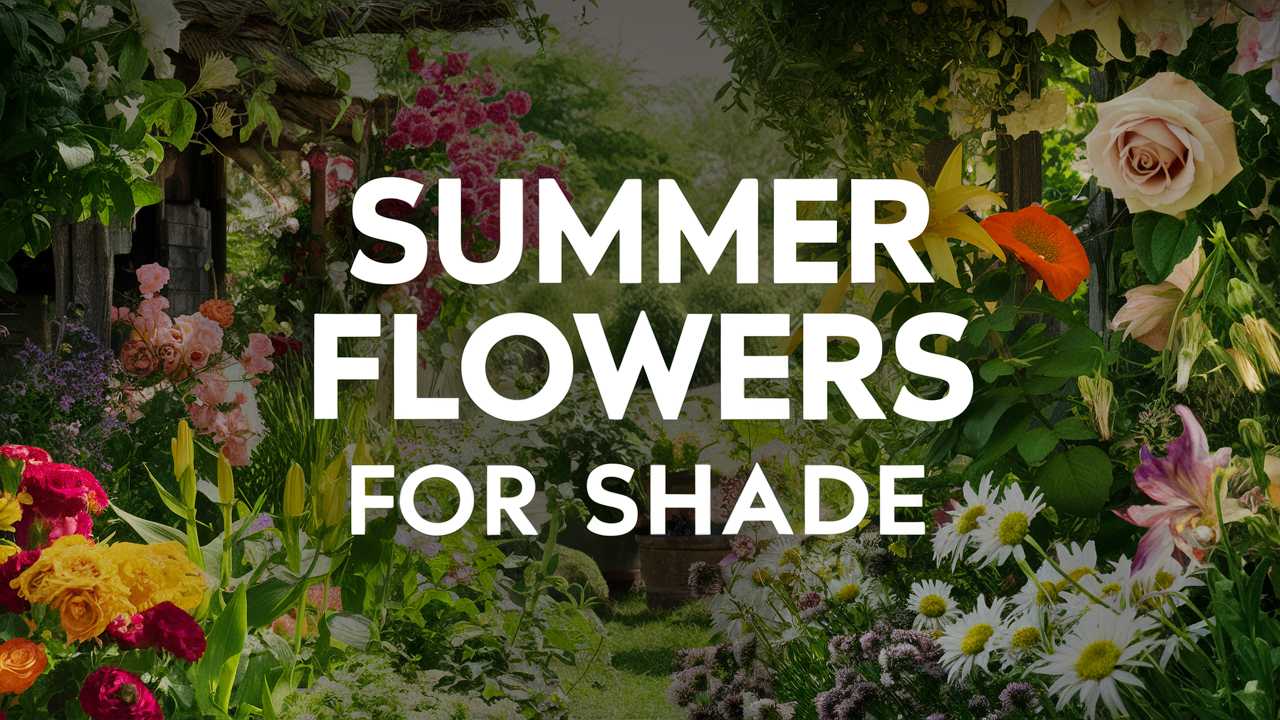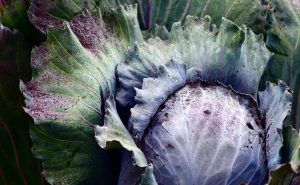Here’s a guide to some fabulous summer flowers for shade that will keep your garden lush and vibrant.
Coral Bells
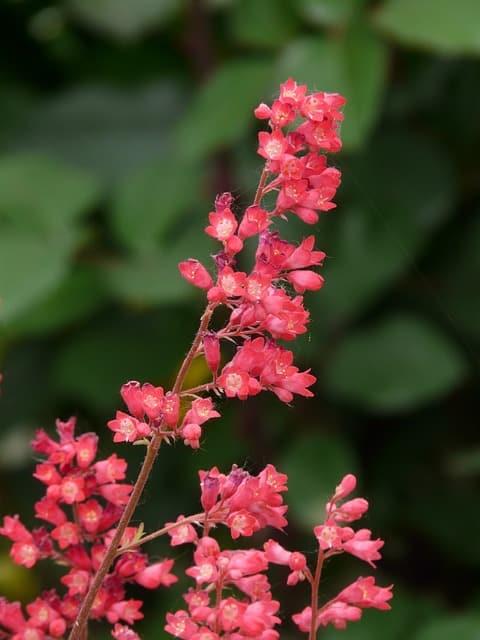
Coral Bells, or Heuchera, are a delightful addition to any shade garden. Known for their stunning foliage, which comes in a variety of colors—ranging from deep burgundy to silvery green—these plants bloom in late spring to early summer with delicate flowers that rise above the foliage. Their bell-like flowers attract hummingbirds and bees, making them not just visually appealing but beneficial for the ecosystem. They thrive in well-drained soil and appreciate a layer of mulch to retain moisture, making them a low-maintenance option for shaded areas.
Hydrangea
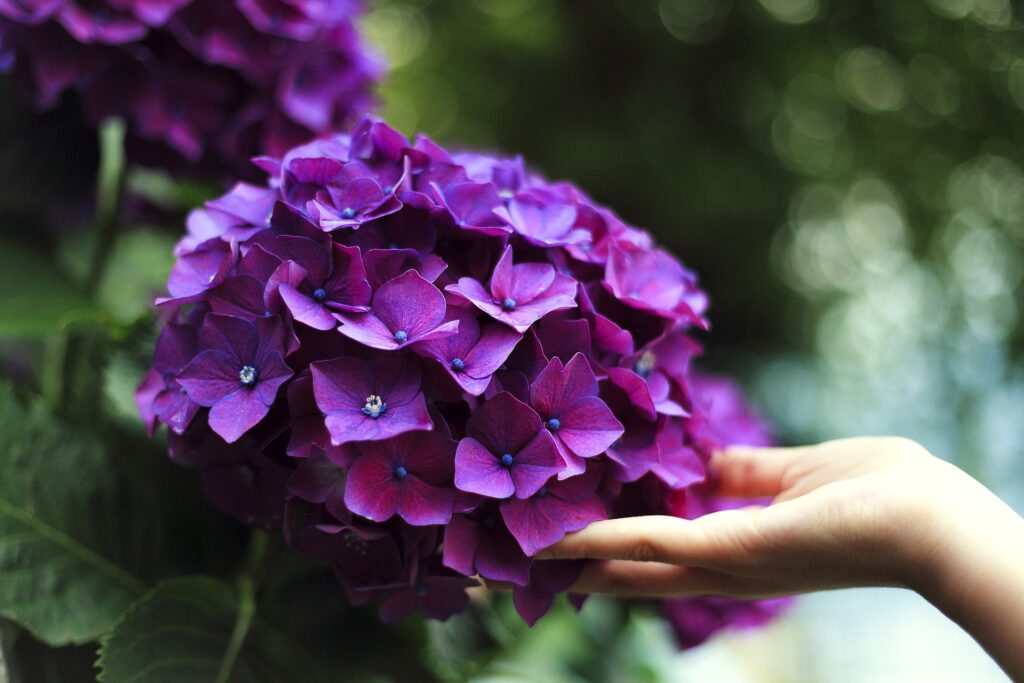
Hydrangeas are a classic choice for shade gardens, and their large, glorious blooms bring a sense of elegance to any landscape. These perennial favorites bloom in hues of blue, pink, white, and purple, depending on soil pH. Most hydrangeas prefer a little dappled sunlight or partial shade, making them ideal for the often-overlooked corners of the garden. They require consistent moisture, so be sure to water them regularly, especially during dry spells. The dramatic size of the blooms creates a striking focal point, especially when planted en masse.
Astilbe
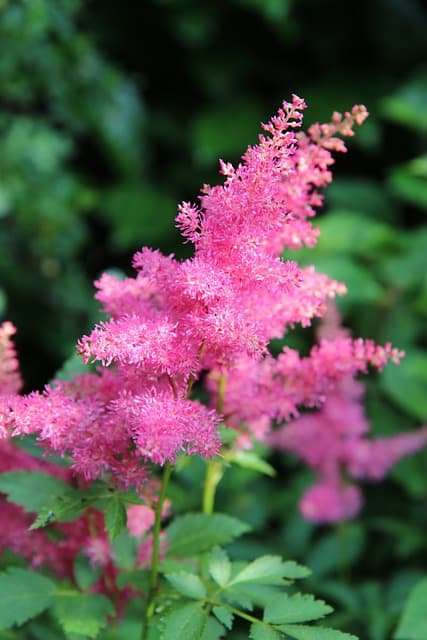
Astilbe is renowned for its feathery plumes that rise above the foliage like cotton candy. These plants love shade and moist soil, making them perfect for under trees or in areas that receive filtered sunlight. Blooming in mid to late summer, their flowers can be red, pink, white, or purple, providing a rich contrast against the green leaves. The texture and height Astilbe brings to a garden can soften the edges of walkways or create a picturesque backdrop for lower-growing plants. Additionally, they require minimal upkeep, thriving without the need for deadheading.
Impatiens
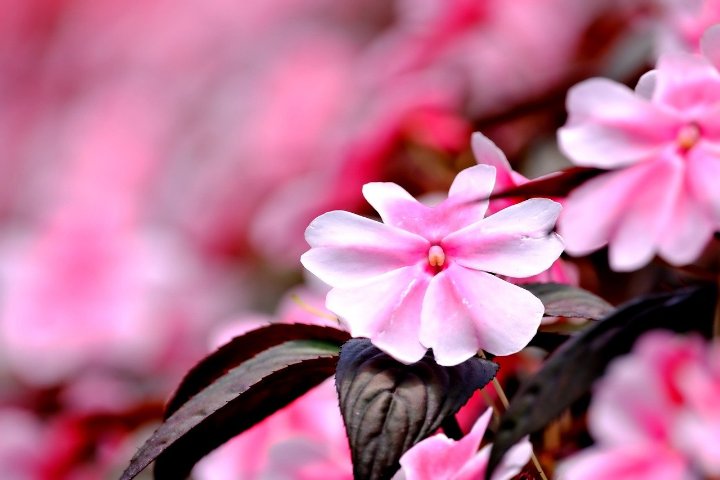
If you’re looking for vibrant color in the shade, Impatiens are your go-to choice. These annuals are famous for their bright, cheerful flowers available in virtually every shade. They’re ideal for containers, hanging baskets, or as ground cover, filling shady spaces with a long-lasting bloom. Impatiens prefer moist, well-draining soil and a sheltered spot from harsh winds. They do best with regular watering, especially in hot summer months, so be prepared to incorporate a consistent care routine.
Bleeding Heart
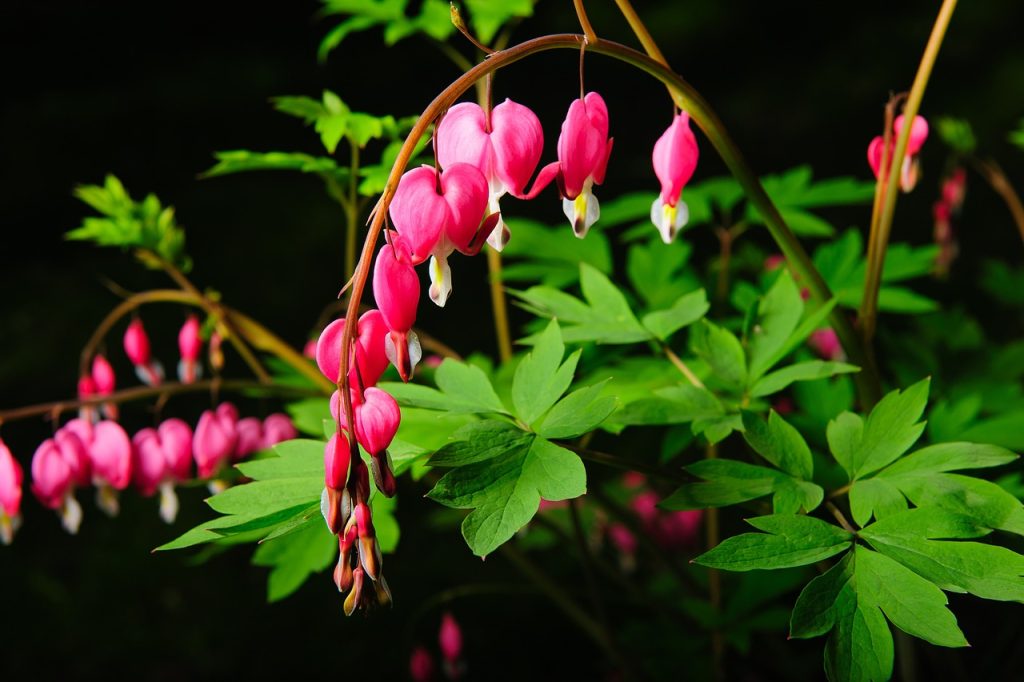
For a whimsical touch in your shade garden, Bleeding Heart (Dicentra spectabilis) is a must. With its unique, heart-shaped flowers that droop elegantly, this perennial brings charm and intrigue. The blooms appear in late spring and can last well into summer, showcasing hues of pink and white. They flourish in moist, well-drained soil enriched with organic matter, and their lush green foliage complements their flowers beautifully. Bleeding Hearts prefer cooler climates but can adapt to other conditions, making them versatile additions to any shaded area.
Rhododendron

Rhododendrons are a magnificent choice for large shade areas, offering both spectacular blooms and evergreen foliage. Varieties range from small, compact shrubs to large, towering plants. They bloom between early spring and early summer, showcasing clusters of trumpet-shaped flowers in a range of colors, including lavender, pink, and red. Rhododendrons thrive best in acidic soils and require well-drained conditions; thus, mulching helps maintain soil moisture while mitigating weeds. Their reliable display of flowers makes them one of the stars of the shade garden.
Lungwort
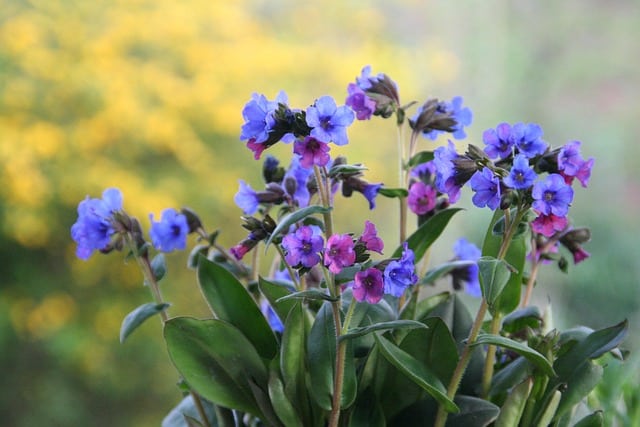
Lungwort (Pulmonaria) is a native perennial known for its striking foliage that may have white spots or variegation. During spring, Lungwort showcases captivating blue to pink flowers, offering delightful early color in shaded environments. Best suited for moist, well-draining soil, Lungwort is highly adaptable and tolerates a variety of conditions. This plant also functions as a beneficial ground cover, helping to suppress weeds and retain soil moisture. Its interesting leaf patterns and small clusters of flowers add a gentle beauty to any shady nook.
Fuchsia
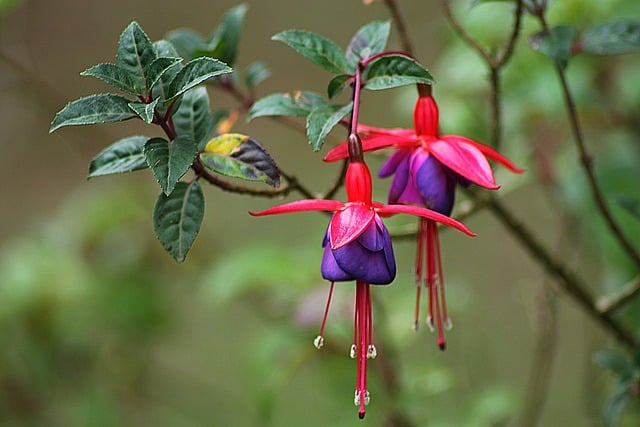
Fuchsia plants bring a joyous splatter of color to shaded areas with their pendulous flowers, commonly found in hues of pink, purple, and white. Often seen in hanging baskets and containers, Fuchsia thrives in cool, moist environments, preferring filtered light or partial shade. Their unique blooms attract pollinators, including hummingbirds, drawing them to your garden where they can flourish. Regular watering is essential, but make sure not to overwater, as they prefer slightly moist soil. Their graceful flowers make for a breathtaking display, especially when mixed with other shade-tolerant plants.
Siberian Bugloss
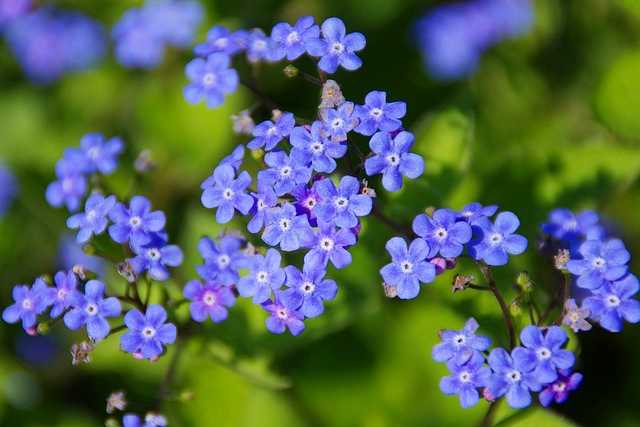
Siberian Bugloss (Brunnera macrophylla), often referred to as False Forget-Me-Not, adds a whimsical, old-world charm to shade gardens. With its rich green leaves and small, cluster-like blue flowers that emerge in spring, it’s a perfect companion for other woodland plants. This perennial indeed thrives in moist, cool conditions, making it a reliable choice for consistently shady areas. Its heart-shaped leaves are particularly attractive, and the plant can spread nicely, creating a blanket of foliage accented with its striking blue blooms.
Lily of the Valley
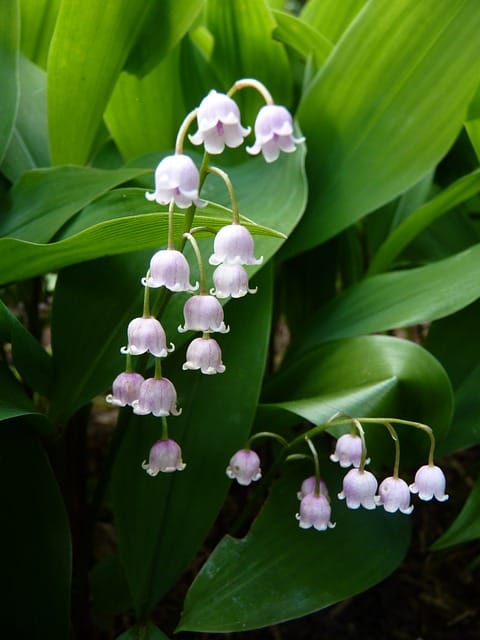
Lily of the Valley (Convallaria majalis) stands out with its iconic bell-shaped flowers and sweet fragrance. It thrives in rich, well-drained soils, making it a perfect fit for shaded areas where it can spread charmingly. Blooming in spring, the white flowers deliver a delicate beauty that yields enchanting scents throughout a garden. This perennial is highly resilient, capable of tolerating a variety of conditions, and is a wonderful ground cover that can quickly fill in bare spots beneath trees or shrubs.
Wishbone Flower
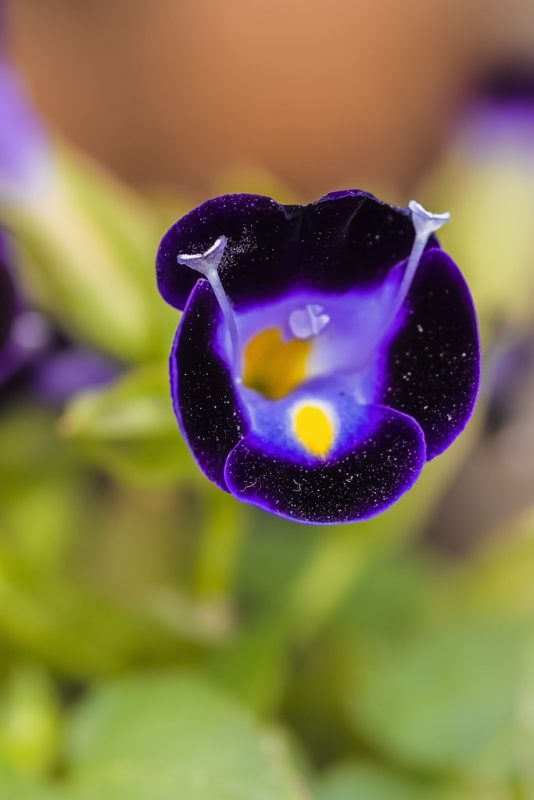
The Wishbone Flower (Torenia) is an annual that performs splendidly in shaded spots, producing colorful trumpet-shaped blooms from late spring until frost. Available in shades of blue, purple, and yellow, these flowers provide cheerful color and often have a unique pattern on their petals. Wishbone Flowers thrive in well-draining soil and prefer consistently moist conditions, making them perfect for shaded garden beds and containers. Their low-growing habit makes them ideal for borders or as ground cover, bringing delightful charm to shadier corners of your yard.
Lamb’s Ear
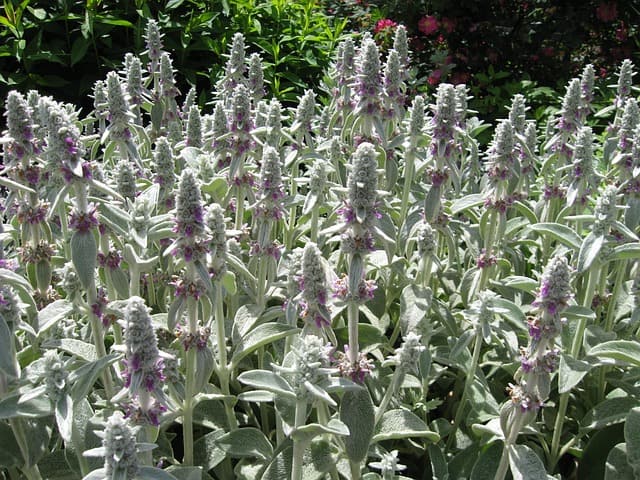
Lamb’s Ear (Stachys byzantina) is not just another pretty face in the green world; its silvery, fuzzy leaves feel incredibly soft to the touch, much like the wool of a lamb. This herbaceous perennial prefers dry soil and thrives in partly shaded conditions, making it a unique choice in a predominantly floral shade environment. Although it doesn’t boast vibrant flowers, it produces spikes of pink to purple blooms that attract bees and provide an excellent contrast to the leaves. This makes Lamb’s Ear a perfect plant for texture and interest in any shaded garden.
Foxglove
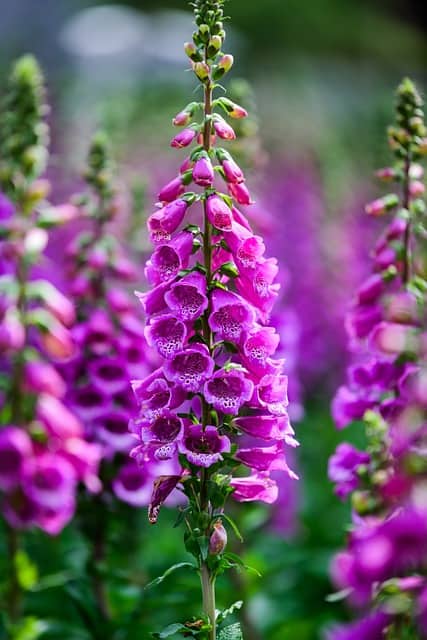
Foxglove (Digitalis purpurea) is a tall, striking perennial that adds vertical interest to shade gardens. Known for its tall spikes adorned with tubular flowers in shades of purple, pink, and white, Foxglove is a magnet for bees and hummingbirds. While it prefers partial shade, this plant thrives in rich, moist, well-drained soil and can withstand dry spells. This biennial plant can self-seed, offering a continual display of blooms throughout the summer. Caution should be exercised when planting, however, as all parts of Foxglove are toxic if ingested.
Forget-Me-Not
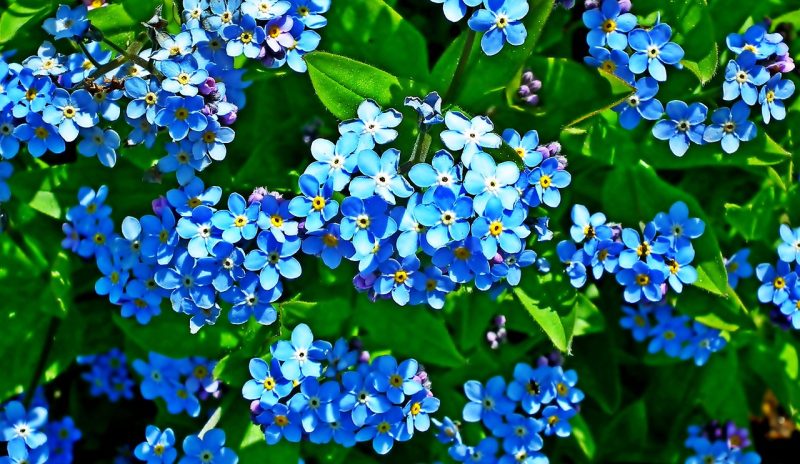
Forget-Me-Not (Myosotis sylvatica) is a sweet flower with a delicate blue hue, capturing attention in the shade. These charming little blooms emerge in spring and can continue blooming into summer, often forming carpets of color in woodland settings. They thrive in moist, rich soil and prefer partial to full shade. These shallow-rooted plants work wonderfully beneath taller flora or in crevices, where they add a sense of cohesion and gentleness to the overall space. Their sentimental flowers make them a favorite among gardeners looking to evoke nostalgia and cheerfulness.
Dogtooth Violet
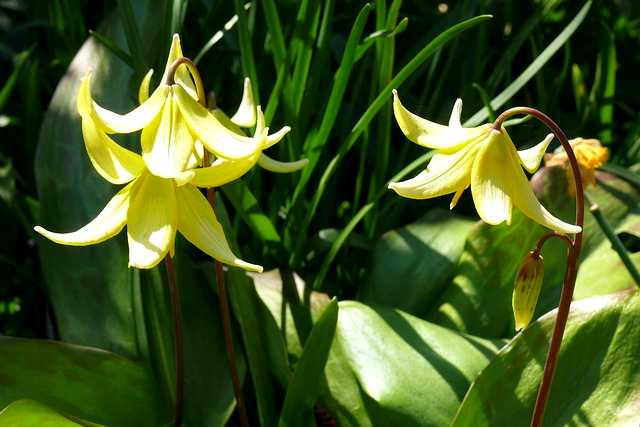
Dogtooth Violet (Erythronium) features stunning, down-turned, tulip-like blossoms and distinctive leaves that often have dark spots. These perennials bloom in early spring, revealing yellow to white or purple flowers that appear above the lush green foliage. They thrive in moist, well-drained soil in shaded environments, often flourishing beneath the cover of trees. These plants can form colonies over time, ideal for planting beneath trees or in naturalized areas. Their charming blooms and unique leaves provide an enchanting element to any shade garden.
Hellebore
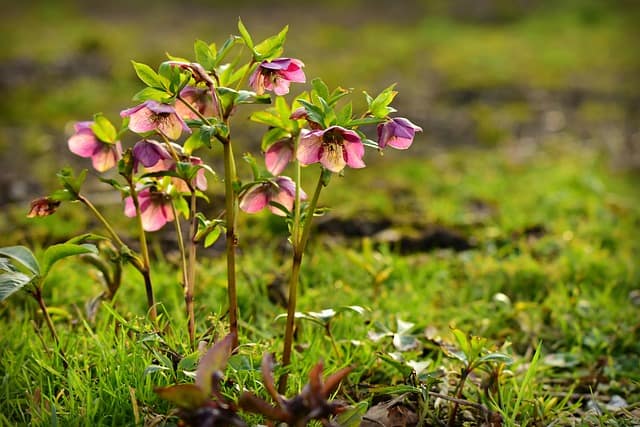
Often referred to as the Christmas Rose, Hellebores (Helleborus) are unique shade-loving perennials that bloom in late winter to early spring, sometimes offering color even when snow is still on the ground. Their flowers appear in various colors, including soft pastels and deep, rich shades. Thriving in well-drained soil with added organic matter, Hellebores can endure some drought once established. Their evergreen foliage also provides year-round interest, making them a prized addition to any shaded corner of your garden that benefits from a splash of color during the colder months.
Primrose
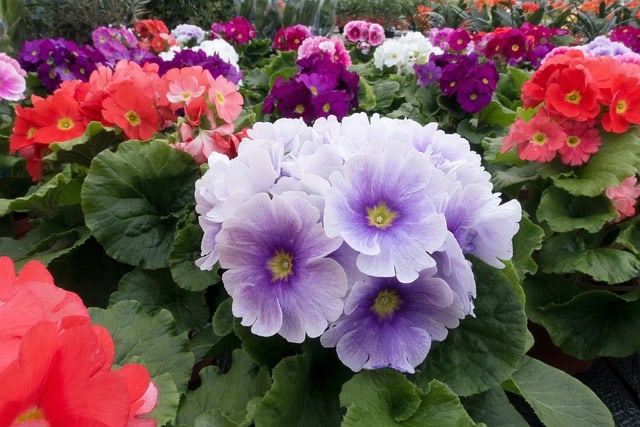
Primroses (Primula) are delightful early-spring bloomers that add a burst of color to shaded spaces. Available in a rainbow of hues, these plants can illuminate dark corners of your garden with their cheerful flowers. They thrive in moist, rich soil with partial shade, making them perfect for under deciduous trees or in other shaded areas. Not only are they perennial, but they can also self-seed, ensuring that they return year after year, offering a reliable source of color to your space.
Hosta
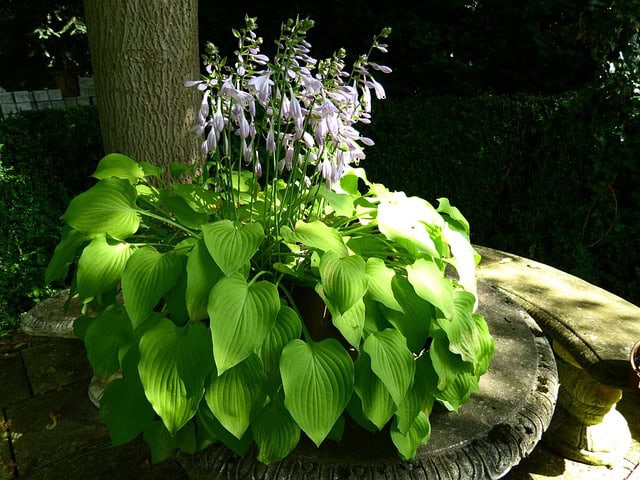
No conversation about shade-loving plants would be complete without mentioning Hosta. These perennial favorites boast stunning foliage in various shapes, textures, and colors, from deep greens to vibrant blues and golds. While their flowers—often lavender or white—can add charm, it’s their leaves that steal the show. Hostas prefer rich, well-drained soil and make excellent ground cover, thriving in entire areas deprived of sunlight. Their adaptability and durability make them popular among gardeners who want robust plants that still deliver on aesthetics.
Woodland Phlox
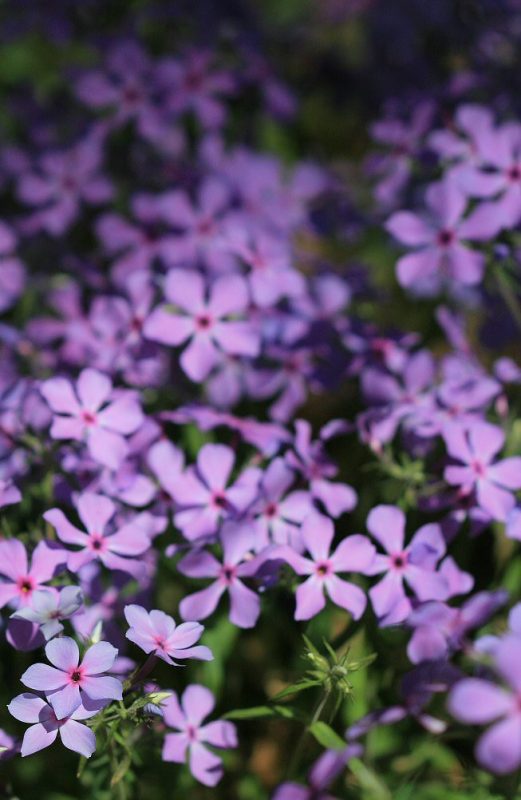
Woodland Phlox (Phlox divaricata) is a charming perennial that fills shaded gardens with fragrant, star-shaped blooms. Typically peaking in bloom from spring to early summer, its blue, lavender, or white flowers can rapidly cover ground with their sprawling nature. They prefer moist, well-drained soil and partial shade, making them ideal companions for other woodland plants. Their delightful aroma and vibrant color will keep your garden alive with interest even in shaded corners, and they make excellent additions to naturalized settings.
Begonia
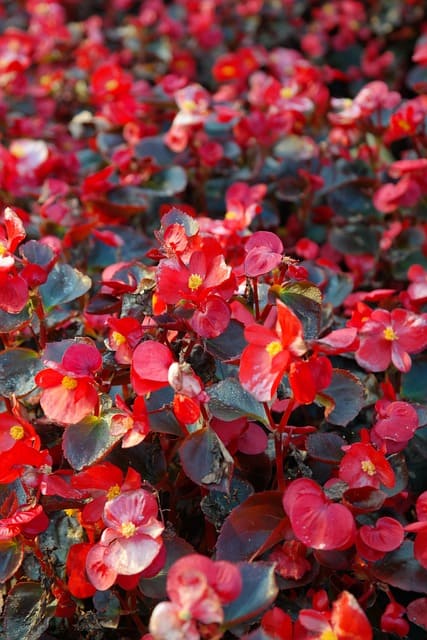
Begonias are a versatile group of plants that thrive in shaded locations, and their diverse forms and colors make them perfect for a variety of styles in the garden. From large-leaved varieties to those with intricate flowers, Begonias can fit any taste. They prefer rich, moist soil and enjoy consistent watering, making them perfect for areas that stay a little cooler and more humid than other spots in the garden. Whether in containers, hanging baskets, or as ground cover, Begonias provide striking visuals from spring through fall.
Lobelia
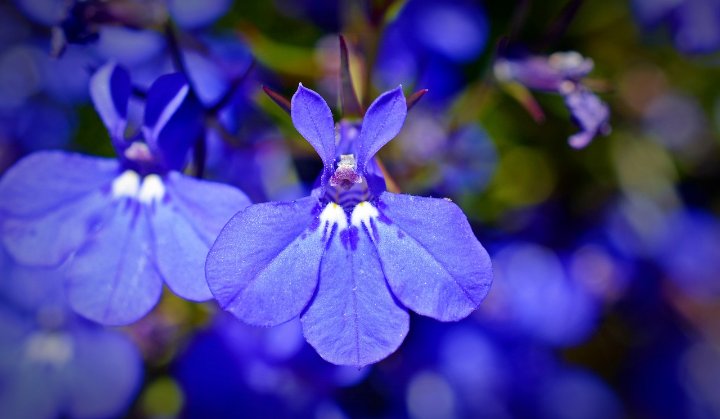
Lobelia is another fabulous flower that loves the shade, boasting brilliant blue, purple, and white flowers that can cascade beautifully over edges or into containers. These trailing annuals thrive in moist, well-drained soil, creating a vibrant ground cover or a lively addition to hanging baskets. The fine texture of their foliage complements their eye-catching blooms, adding layers of interest to any shady spot. Regular deadheading will keep them blooming throughout the summer, making them an enduring choice for presentations that stand out.
Azalea
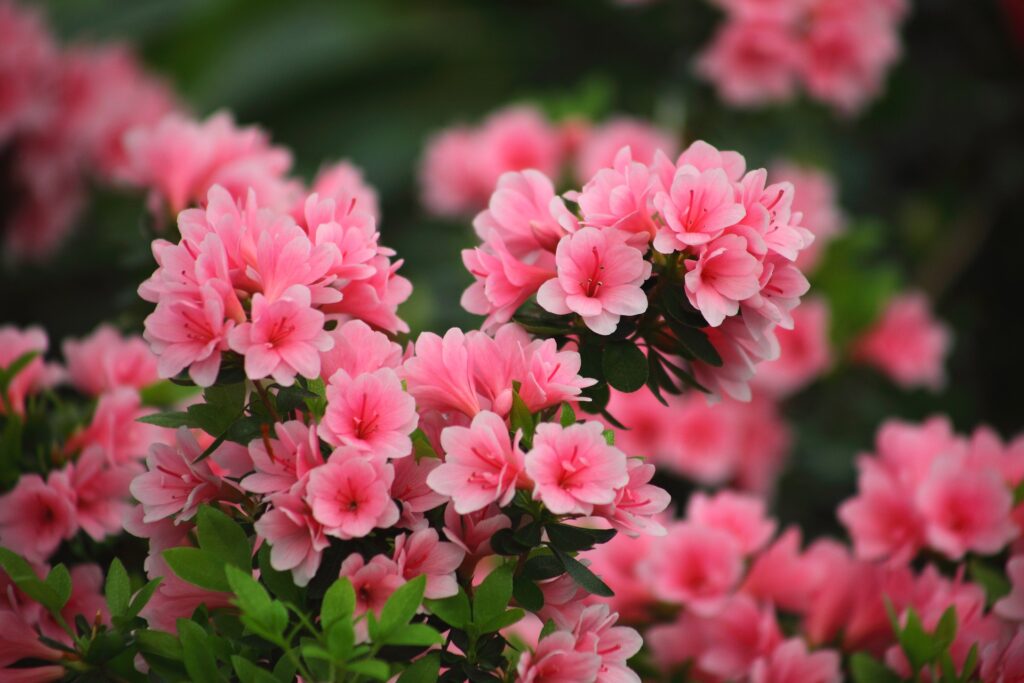
Azaleas are one of the most popular flowering shrubs for shaded areas, offering captivating, trumpet-shaped flowers in a vast array of colors. These plants prefer acidic, well-drained soils and can thrive under the canopy of trees, which provides them with the filtering shade they need. Blooming primarily in spring, the cheerful colors of azaleas can serve as focal points in a landscape, harmonizing beautifully with other shade-loving plants. Their ability to bloom in various timeframes can ensure a steady display of color, making every year in the shade garden like springtime.
Corydalis
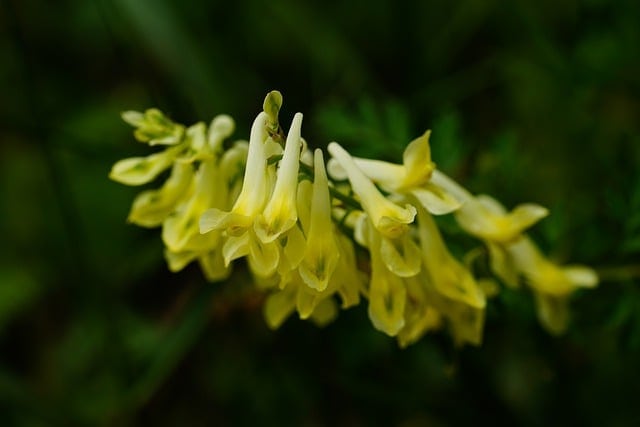
Corydalis is an enchanting lesser-known perennial that adds an ethereal beauty to shaded areas. The delicate, fern-like foliage and unique, tubular flowers can bloom in shades of blue, purple, or white, brightening up dim environments while attracting pollinators that make their home in the garden. Preferring moist, well-drained soil, these plants thrive easily in shaded conditions. Their short stature and graceful blooms work well in front of taller plants, creating a layered effect that enhances visual appeal.
Foamflower
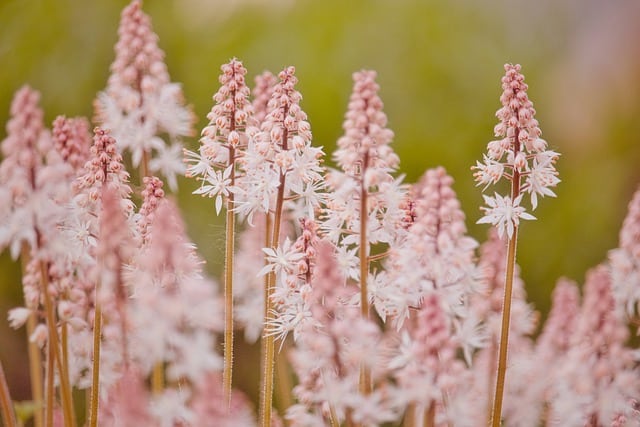
Foamflower (Tiarella cordifolia) is perfect for anyone looking to introduce a soft and serene touch to their shady garden. With heart-shaped leaves that provide attractive foliage and tiny white flowers that bloom atop delicate spikes, this perennial thrives in moist, well-drained soils and can spread to create dense ground cover. They bloom predominantly in spring but can provide interest with their beautiful foliage later in the season as well. Foamflower is particularly appealing in woodland settings, where it nurtures a lush and wild atmosphere.


